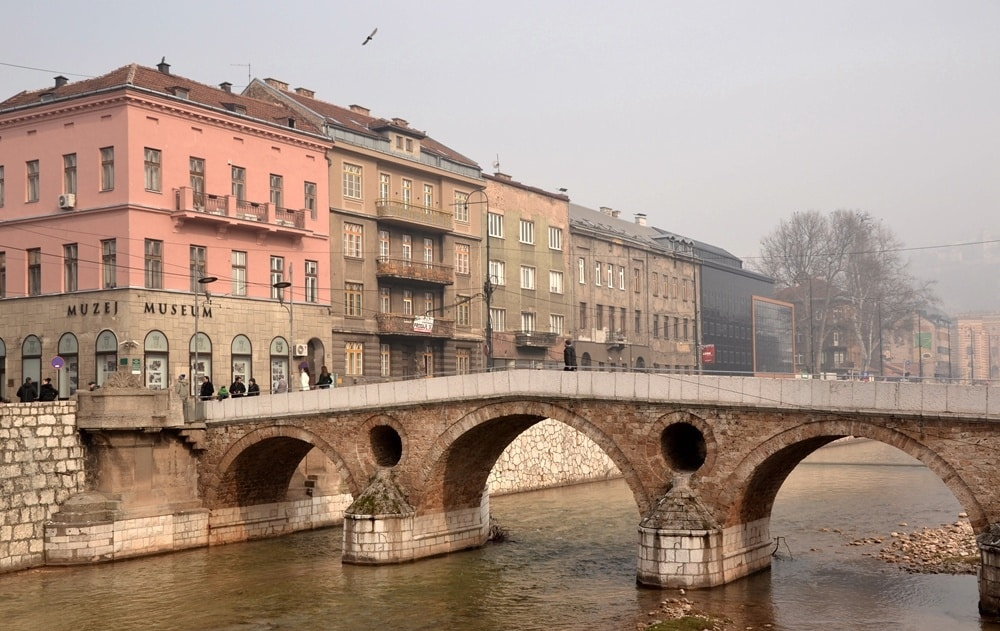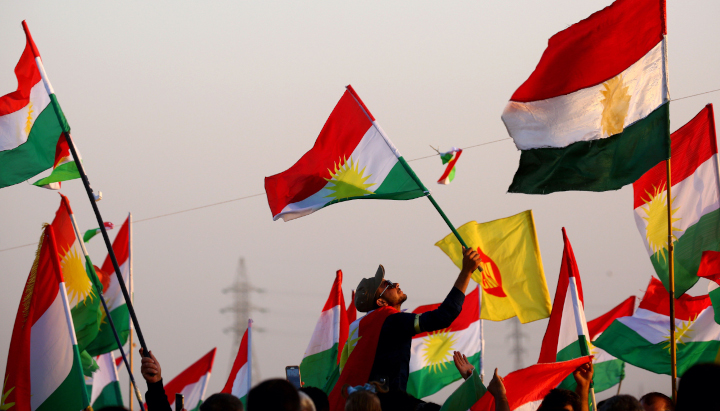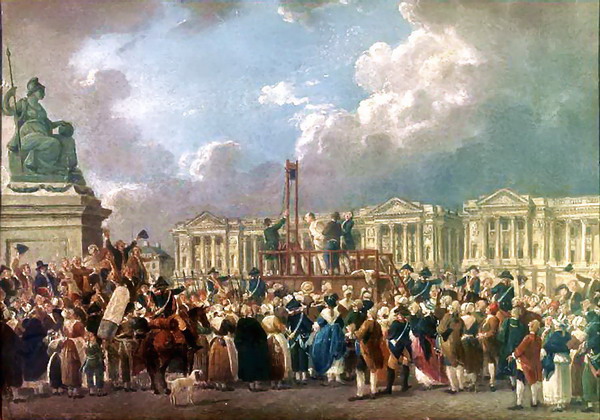Sarajevo is a city blessed by history. For centuries it was a city that managed to host different cultures in a peaceful way, creating a tradition of coexistence and exquisite culture in the heart of the Balkans. However, the Bosnian capital is, in turn, a city with a tragic history. It is linked to the assassination of the Archduke of Austria in 1914 and to the more recent siege of Sarajevo during the Bosnian war in the 1990s. Sarajevo opened and closed the 20th century, but its significance goes beyond these events.

When one takes the first step into the centre of the Bosnian capital, the first thing that jumps out is the mixture of different architectural styles, which can be explained by the amalgamation of cultures that the city has hosted over the past centuries. In barely a hundred meters we can find a Catholic church, an Orthodox church, a mosque and a synagogue. This is the only place in Europe where these four religions coexist so close to each other: Catholics, Orthodox, Jews and Muslims lived together peacefully in Sarajevo for centuries. Later, with the advent of modern nationalism and thus the development of new identities – or rather labels – Orthodox Serbs, Catholic Croats, Bosnian Muslims, as well as Jews and Roma, shared the city and contributed to the development of Sarajevo.
The second step in Sarajevo has a more bitter taste. The buildings that characterize a golden age of tolerance between different cultures, such as the ancient Ottoman center, the captivating Jewish mahalas – districts or neighborhoods – in the steep part of the city, or the Austro-Hungarian style buildings remain standing, but full of scars. These wounds of modern history are nothing more than the holes produced by the gunfire and shrapnel of the late 20th century, when Sarajevo was subjected to one of the worst sieges in modern history, a siege that dynamited the coexistence of the Sarajevites and turned the modern city into a much less heterogeneous one.
The city was – and still is – divided by invisible borders that separate Bosniacs, Serbs and Croats. The multicultural city that symbolized a crossroads of civilizations in Europe is now less multicultural than ever. The Sarajevite who goes beyond these labels and considers himself simply a Bosnian is today almost a stranger in his own land.
Contents
The European Jerusalem: a melting pot
Miguel Roán -a hardcore Balkanist and expert on Southeast Europe- says in his exciting work Balkan Marathon that talking about Muslims, Catholics, Orthodox or Jews is just a way of dividing the world. And certainly, if that were the case, Sarajevo would have to be divided into at least four small worlds.
The city that served as a bridge between East and West was founded by the Ottoman Empire at the end of the 15th century, shortly after its arrival in Bosnia. The Slavic population was already present in the area at that time, although only with the arrival of the Sublime Gate was the city developed and reached its maximum splendour. Some of the city’s most outstanding monuments, such as the Emperor’s Mosque, Gazi Husrev-beg’s library and the first public baths with running water in Europe were built by the Ottoman government during the 16th century.
The arrival of the Ottoman Empire in the region produced a significant variation in the Sarajevite’s denominational identity. At the end of the 15th century, 73% of the population identified themselves as Christian -Catholics, Orthodox and Bogomils-, while in the mid 16th century, 97% of the population of the capital turned to Islam. This rapid conversion to Islam was due, among many other reasons, to the fact that non-Muslim citizens had fewer privileges than the Muslim population, as they generally paid more taxes. Although the privileges between the different communities differed during this period, the traditions of the various groups were respected and the relationship between them was generally positive.
One of the communities that found shelter in Ottoman Bosnia during the 16th century was the Sephardic Jewish population, which had been expelled from Spain by the Catholic Kings. Although the vast majority would end up in North Africa, Turkey and Greece, a significant number of Sephardim ended up settling in the heart of the Balkans due to the economic importance of Sarajevo at that time. The Sephardim brought their culture with them, including the Ladino language, which, although it is still present in the Bosnian capital. Despite the fact that they lacked equality in the status of the Muslim population, the Sephardic Jews were allowed to build synagogues and mahalas. In fact, relations between Muslims and Jews were generally better than those of Christians and the latter, and for a long time more positive than in the rest of Europe.
The centuries to come were for Sarajevo the decline of its great splendour. In 1878, as part of the Treaty of Berlin, the Austro-Hungarian Empire de facto annexed Bosnia and made it an autonomous administrative unit of the State. The entourage of senior imperial officials began to move steadily around Sarajevo. On one of these visits, Archduke Franz Ferdinand of Austria, heir to the Austro-Hungarian throne, was murdered by the young proserb Gavrilo Princip on June 28, 1914. Never has the assassination of a prince attracted as much attention as it has in the history books. The reason is simple: Princip, who belonged to the Young Bosnia group – which supported the creation of Yugoslavia and rejected the Austro-Hungarian occupation – is blamed for precipitating the outbreak of the First World War, which had actually been brewing for some time. In this way, Sarajevo was credited with opening the 20th century with the start of the Great War.
The Yugoslav project
Although Sarajevo managed to escape a large part of the military offensives during the IGM, the inter-war period saw a decline in the importance of the Bosnian city. Belgrade, which had suffered in the flesh from military actions during the course of the war, became more important as it became the capital of the new Kingdom of Yugoslavia. The outbreak of the Second World War, however, would put the coexistence of the different Sarajevite communities in check. The Croatian fascist army Ustacha and Nazi Germany systematically persecuted the Serbian and Jewish communities, and it is estimated that when Sarajevo was liberated by Tito’s communist partisans in April 1945, more than 80% of Sarajevo’s Jews had been executed.
Tito’s new socialist project had set as its great goal to iron out the differences between the various communities by creating the motto “brotherhood and unity”. The aim was therefore to create a Yugoslav culture and identity that would go beyond the socio-cultural labels of the pre-war period – Serbian, Croatian, Bosnian, etc. – but would also be compatible with them, thus giving rise to a kind of parallel identity. Bosnia, and especially Sarajevo, became the main focus of this new project. The number of people registered as “Yugoslavs” – and not just any national identity – was the highest in all of Yugoslavia.
The holding of the 1984 Winter Olympic Games in Sarajevo not only provided an opportunity to consolidate the city’s multicultural image throughout the world, but also strengthened its Yugoslav identity, becoming a turning point for the identity of the Sarajevites themselves. Furthermore, the channelling of American money through major infrastructure works, such as new sports facilities or the remodelling of Sarajevo airport, led to a significant modernisation of the city. In just half a century, the city’s population grew from one hundred thousand to half a million. The absolute success of this competition put Sarajevo on the world map and was an unforgettable event for the Yugoslav city. Sarajevo – and also Yugoslavia – became a symbol of openness and tolerance throughout Europe, until the nationalisms of the late 1980s and early 1990s finally dissolved the illusion of the Yugoslav state.

However, a group of young Bosnian comics emerged in the antechamber of the dissolution of Yugoslavia, perfectly representing Sarajevo’s multicultural identity: Nadrealist Top List (‘Surrealist Hit List’ in Serbo-Croatian). Made up of actors from the three main Bosnian communities, their satirical humour prophesied the tragic future of Bosnia a few years before the start of the war. Some sketches even showed a wall to divide Sarajevo into different communities, conflicts between families, or even the sniper attacks that would terrorize the city years later. Colleagues who were inseparable at the beginning ended up as enemies and divided after the end of the conflict, showing how the nationalist discourse established in the political elite ended up penetrating a large part of the Bosnian population and finally confronting them.
The fragmentation of Yugoslavia, however, was resisted in Sarajevo until 1992. Indeed, shocking images of the prelude to the siege of the city remain in the retina, such as the peace march of April 5 of that same year, where tens of thousands of Sarajevites of all identities demanded that the new government representing the three majority identities resign. The response of the Bosnian Serb army – later to be led by war criminal Ratko Mladić – was to open fire on the crowd from the Holiday Inn hotel, causing six deaths. Immediately, the roads in and out of Sarajevo and the airport were closed at full speed. This was the beginning of one of the longest sites in modern times: almost half a million people would be trapped for nearly four years without direct access to food, medicine or electricity.
From symbol of peace to divided city
The siege of Sarajevo – and the Yugoslav wars in general – was one of the first war events to be broadcast on television. Like a video game, viewers around the world watched day after day as the Sarajevite population was subjected to total isolation where deaths from sniper fire were commonplace. To their dismay, and overnight, Sarajevo became one of the main symbols of violence in the former Yugoslavia, along with the 1995 massacres around Srebrenica.
In those times of extreme survival, some ordinary citizens tried to cope with the siege while keeping, as much as possible, the naturalness of everyday life. The 1993 Miss Sarajevo beauty contest, held in a basement in the city, to which the Irish rock band U2 later dedicated a song of the same name, is worth noting. The message was clear: you had to keep on living. The event became an anti-war symbol, since at the end of the parade the contestants would end up showing a poster with the slogan “don’t let them kill us”. Meanwhile, intrepid and unwise commentators rushed to explain the war conflict through alleged historical tensions between the different communities. The majority of the Bosnian population, on the other hand, claimed that such events could never take place in Bosnia even when the conflict had broken out in Croatia. Much less could happen in Sarajevo, which was the multicultural symbol of Yugoslavia. However, history proved otherwise.
The four buildings that served as places of worship for the four religions living together in Sarajevo were damaged. The National Library, a symbol and literary memory of cultural coexistence for centuries, was destroyed. With it also disappeared thousands of books that held the literary memory of Sarajevo. Overnight, Sarajevo had lost its multicultural element. The Bosnian Serb political leader Radovan Karadžić went so far as to propose copying the Berlin Wall, proposing that Sarajevo be divided in two, one part for Serbs and the other for Bosniaks and Croats. This idea, however, was tacitly and explicitly rejected by Richard Holbrooke, one of the American diplomats who worked hardest to end the wars in Bosnia and Croatia.
Holbrooke would also be one of the main architects of the peace agreements signed in Dayton, USA, which would end the war in Bosnia and Croatia in December 1995. After almost four years of siege and more than 13,000 deaths, the Sarajevite population stopped hearing the constant noise of snipers and machine guns. The peace agreements would bring a cessation of hostilities, but they did not serve to consolidate a lasting peace.
Dayton, in addition to creating a very convoluted system of government with three presidents, divided the country into two parts: the Federation – mainly inhabited by Bosniaks and Bosniacs – and the Republika Srpska – mainly composed of Bosnian Serbs. Dayton created a political system for Bosniaks, Serbs and Croats; however, it failed to include citizens who considered themselves simply Bosnians.
Sarajevo, although without a physical wall, was also divided into an invisible border marked by ethnicity. The multicultural city of yesteryear has become a mainly Bosnian city, while the Serbian population has come to occupy almost the entire eastern part of Sarajevo. Before the conflict, the city was inhabited by about 50% Bosniacs and 30% Serbs. Today, it is estimated that 80% of Sarajevites belong to the Bosniak community. In Sarajevo, the last victim of the war was cosmopolitanism.

